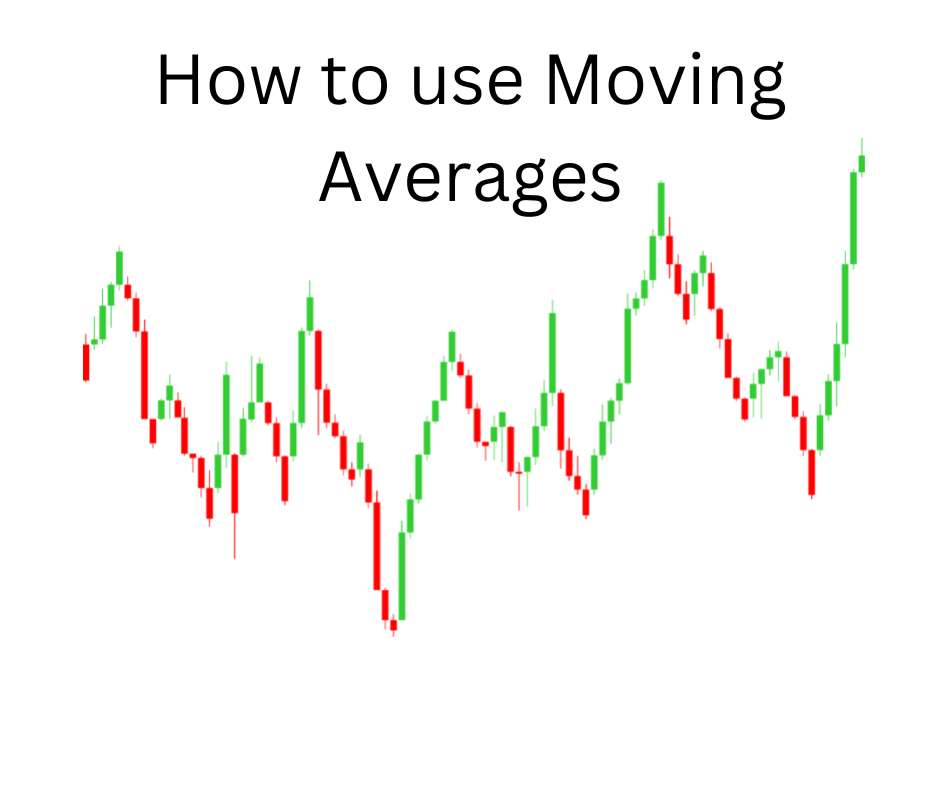As a seasoned forex trader, I have found moving averages (MAs) to be a useful tool in my technical analysis toolbox. MAs are one of the most popular indicators among forex traders due to their simplicity and versatility.
In this article, I will guide you on effectively using moving averages in forex trading. I will explore the different types of MAs, their benefits, and provide you with various strategies to incorporate MAs into your trading routine.

Why are MAs popular among forex traders?
Moving averages have been around for decades and are a widely used technical indicator in forex trading.
The popularity of MAs among forex traders can be attributed to their simplicity and versatility. MAs can be used to identify trends, reversals, and price levels of support and resistance. Additionally, MAs can be applied to any timeframe and any currency pair.
MAs are particularly useful in forex trading because they help traders to smooth out the price action, making it easier to identify trends.
They also help traders to avoid the noise and volatility that can occur in the forex market. In addition, MAs can be combined with other technical indicators, such as the Relative Strength Index (RSI) and Moving Average Convergence Divergence (MACD) to generate trading signals.
Simple moving average (SMA) vs exponential moving average (EMA)
The two most common types of moving averages are simple moving averages (SMA) and exponential moving averages (EMA). The SMA is calculated by adding up the closing prices of a currency pair over a specific period and dividing the sum by the number of periods. Conversely, the EMA places more weight on the most recent prices, giving them a higher weighting in the calculation.
The choice between the SMA and EMA depends on the trader’s trading style and preferences. The SMA best suits traders who prefer a slower-moving average that reacts less to short-term price fluctuations. On the other hand, the EMA is preferred by traders who prefer a faster-moving average that reacts more quickly to price changes.
Trend Analysis
One of the most popular ways to use moving averages in forex trading is to identify trends. When a currency pair is trending, the price tends to move in one direction for an extended period. MAs can be used to identify these trends and to help traders to stay on the right side of the market.
In an uptrend, traders look for the price to be trading above the MA, while in a downtrend, the price should be trading below the MA. Traders can also use multiple MAs to identify the strength of a trend. When multiple MAs are stacked on top of each other, with the shortest MA at the top and the longest at the bottom, it is known as a moving average crossover.
How to use MAs in forex trading
There are several ways to use MAs in forex trading. In this section, I will provide you with some of the most popular methods.
An Easy Moving Average Trading Strategy
A simple moving average crossover strategy is one of the easiest ways to use MAs in forex trading. This strategy involves using two MAs, a short-term MA, and a long-term MA. When the short-term MA crosses above the long-term MA, it is a buy signal, while when the short-term MA crosses below the long-term MA, it is a sell signal.
Why Use Forex Crossover Moving Average Strategies?
Crossover moving average strategies are popular among forex traders because they are easy to understand and can generate reliable trading signals. These strategies work best in trending markets where the price is moving in one direction for an extended period.
Identifying Overextended Forex Markets
MAs can also be used to identify overextended forex markets. When the price of a currency pair moves too far away from the MA, it is considered overextended, and traders may expect a pullback. To identify an overextended market, traders can use a long-term MA, such as a 200-day SMA, and look for the price to be significantly above or below the MA.
Trading with two moving averages
Another popular way to use MAs in forex trading is to use two MAs of different lengths. Traders can use a shorter-term MA, such as a 50-day SMA, and a longer-term MA, such as a 200-day SMA, to generate trading signals. When the shorter-term MA crosses above the longer-term MA, it is a buy signal, while when the shorter-term MA crosses below the longer-term MA, it is a sell signal.
When Should I Use A Crossover Moving Average Forex Strategy?
A crossover moving average strategy can be used in any market condition, but it works best in trending markets. When the market is moving in one direction for an extended period, the strategy can generate reliable trading signals. In ranging markets, however, the strategy may generate false signals and result in losses.
Trading with one MA
Traders can also use a single MA to identify areas of price equilibrium in a currency pair. When the price is trading above the MA, it is considered bullish, while when the price is trading below the MA, it is considered bearish. When the price is trading around the MA, it is considered to be in a state of equilibrium.
Areas of price equilibrium with longer-period moving averages
Longer-period moving averages can also be used to identify areas of price equilibrium. When the price is trading around a longer-term MA, such as a 200-day SMA, it is considered to be in a state of equilibrium. Traders can use this information to look for potential trading opportunities when the price breaks out of the equilibrium zone.
Moving Average Ribbon Trading Strategy
The moving average ribbon strategy involves using multiple MAs of different lengths to generate trading signals. When the MAs are stacked on top of each other, it creates a ribbon-like pattern on the chart. Traders look for the price to break out of the ribbon to generate a trading signal.
Using Moving Averages + the MACD indicator
MAs can also be combined with other technical indicators, such as the MACD indicator. The MACD indicator is a trend-following momentum indicator that helps traders to identify the trend’s direction and the market’s momentum. When the MACD line crosses above the signal line and the price is trading above the MA, it is a buy signal, while when the MACD line crosses below the signal line and the price is trading below the MA, it is a sell signal.
The single MA cross
The single MA cross strategy involves using a single MA to generate trading signals. When the price crosses above the MA, it is a buy signal; when the price crosses below the MA, it is a sell signal. This strategy works best in trending markets, and traders can use a longer-term MA, such as a 200-day SMA, to generate more reliable signals.
What is a Linearly weighted moving average
A linearly weighted moving average (LWMA) is a moving average that places more weight on the most recent prices. This gives the LWMA a faster response time than the SMA, making it better suited for traders who prefer a faster-moving average.
Pros and Cons of Moving Average Strategies
Moving average strategies have several advantages, such as their simplicity, versatility, and ability to identify trends.
However, they also have some drawbacks, such as their lagging nature and their inability to predict future market movements. Traders should also be aware that moving averages can generate false signals in ranging markets, leading to losses.
Despite these drawbacks, moving averages remain a popular technical indicator among forex traders, and many traders have found success using them in their trading strategies.
More: Best EMAs for Forex trading
Conclusion
Moving averages are a popular technical indicator among forex traders due to their simplicity and versatility. They can be used to identify trends, reversals, and areas of support and resistance.
Traders can use various MA strategies, such as crossover, single MA, and moving average ribbon strategies, to generate trading signals. However, traders should be aware of the drawbacks of using moving averages, such as their lagging nature and their inability to predict future market movements.
Incorporating moving averages into your trading strategy can be valuable in your technical analysis toolkit.
However, using them in combination with other technical indicators and practicing proper risk management to ensure long-term success in forex trading is important.
Frequently Asked Questions
Can moving averages be used in any timeframe?
Moving averages can be used in any timeframe and currency pair.
Which is better, a simple moving average or an exponential moving average?
The choice between a simple moving average and an exponential moving average depends on the trader’s trading style and preferences.
Can moving averages predict future market movements?
No, moving averages are a lagging indicator and cannot predict future market movements.
How many moving averages should I use in my trading strategy?
The number of moving averages to use in your trading strategy depends on your trading style and preferences. Some traders use two or more MAs to generate trading signals, while others use a single MA.
Can moving averages generate false signals?
Yes, moving averages can generate false signals, especially in ranging markets. It is important to use them in combination with other technical indicators to generate reliable trading signals.
